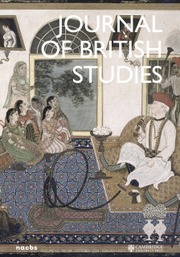Erin Sebo's In Enigmate: The History of a Riddle, 400–1500 charts the creation riddle over four texts spanning more than a millennium. Dedicating a chapter first to the riddle's classical background, then to Aenigmata Symphosii, then Aldhelm's De Creatura, followed by Riddles 40, 66, and 93 from the Exeter Book, and finally to the early modern Riddles wisely expounded, Sebo not only situates the function of riddles in each of these historic periods but also shows the development of the creation riddle as a form of elite entertainment and religious revelation to its last manifestation as a popular method of folk art. At a glance, In Enigmate may seem an esoteric study of an overlooked genre of riddle; yet in weaving together ancient history, literary analysis, and a close reading of Latin and Old English texts, Sebo, as she informs her reader as part of her thesis, expertly “demonstrates the capacity of literary and cultural forms to persist, transform and reinvent [themselves] in ways that reflect and respond to changing cultural imperatives” (14).
Beginning with the Aenigmata by Symphosius, a fifth-century Roman pagan, Sebo examines the Aenigmata's order, structure, titles, and imagery, revealing how “Symphosius’ riddles move their audience, not from complexity to certainty but in the opposite direction, from certainty to complexity” (53), a feature that closely links Symphosius to Aldhelm. Rather than misdirect their audiences through a false contradiction (the example that Sebo cites is the riddle for lice that Homer is asked in The Contest of Homer and Hesiod), both Symphosius and Aldhelm tend to prefer a much more cosmic manner of riddling that embraces the (inherently true) contradictions knit up within the categorically defiant expansiveness of creation. This style of riddling, as Sebo compellingly argues, may serve as a type of religious meditation, of potential transcendence and mystical revelation: “Riddles encourage us to think within one framework, while the answer we seek can only be gained by thinking within another. … The quality of exploring the Other meant that, in addition to being a subversive genre, in the ancient world riddles were felt to be an appropriate medium for the revelation of divine mysteries” (35).
In moving to the Exeter Book, Sebo sees Aldhelm's De Creatura as an important influence for the authors of Riddle 40, 66, and 93, in that creation, given its expansive multiplicity, is itself essentially the riddle of riddles. However, where Aldhelm's De Creatura is persuasively ideological, the more vernacular Exeter Book shows how in “each riddle the subject is described entirely from its own point of view without reference to the interests of human society” (114), a trope that Sebo wants to see as “a much more ambiguous, interrogative, searching view of the world and interestingly [sic] is the element of the creation riddle which most obviously survived the Norman Conquest” (116). Glimmers of this ideological ambiguity appear in different versions of Riddles wisely expounded, in which a young girl must defeat an intrusive male riddler. The girl's success depends on not only her understanding the (sweepingly cosmic) answers to the man's questions but in answering them modestly and without blaspheming. Yet Sebo maintains that in situating creation riddles within a wider narrative context, as in Riddles wisely expounded, the power of riddles as a means of mystical revelation was thereby largely ignored, the effect of which was to lead to “the decrease in popular interest in riddles and riddling” (135).
In total, In Enigmate provides a fascinating study of the too often overlooked genre of “the creation riddle,” and Sebo's close sifting of the various historic and literary influences that went into shaping the genre will hopefully encourage further scholarship on the ways in which Anglo-Saxon riddles—their catalogues, juxtapositions, descriptions, and answers—may indicate a subtle religious ideology held by their authors and audiences. The study will appeal to anyone with a general interest in riddles or with an interest in the poetic traditions inherited by and part of early medieval England. Moreover, the book includes useful appendices of Sebo's translation of the Symphosii Scholastici Aenigmata; the Aenigmata broken down by lemma, subject, and theme; and the appearance of the word riddle in various biblical translations.



